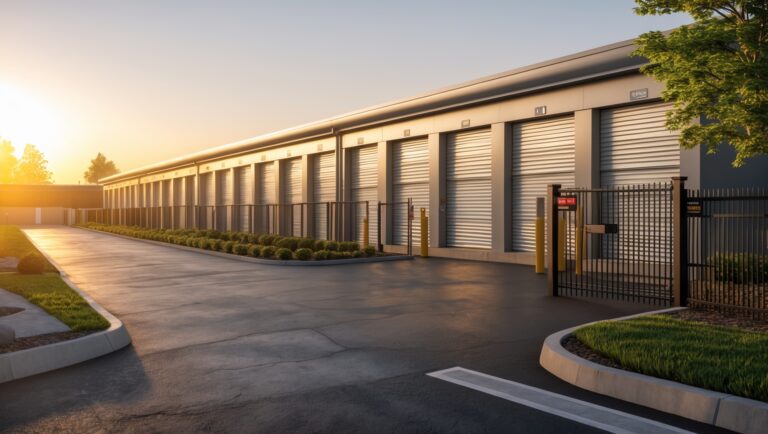Step-by-Step Setup: Launching a Profitable Mobile Storage Business
Introduction: Why Mobile Storage Is Booming
The moving and storage industry is evolving rapidly, with mobile storage emerging as one of the most in-demand solutions for both residential and business clients. Unlike traditional self-storage, mobile storage brings the container directly to the customer, offering unmatched convenience, flexibility, and security. Whether customers are renovating, relocating, or simply decluttering, mobile storage meets their needs without the hassle of multiple trips to a facility. This surge in demand, fueled by urbanization and the shift towards on-demand services, has created a lucrative opportunity for entrepreneurs willing to enter the market. However, launching a mobile storage business involves more than just purchasing containers and a truck. It requires careful planning, compliance with regulations, strategic marketing, and attention to operational details. In this comprehensive guide, we’ll walk you through the entire process—step-by-step—from initial research to launching and scaling your mobile storage business. By following these best practices, you’ll be positioned for long-term profitability and growth in a highly competitive industry.
Researching Your Local Market
Analyze Demand and Competition
Start by assessing demand in your target area. Consider the following:
- Population Growth: Rapidly growing suburbs and urban centers have higher storage needs.
- Real Estate Trends: Areas with frequent home sales, apartment moves, or business relocations are ideal.
- Existing Providers: Identify how many mobile and traditional storage businesses serve your region. Study their service offerings, pricing, and customer reviews.
Identify Niche Opportunities
Look for gaps in existing services. Are there underserved neighborhoods? Is there demand for specialty storage (e.g., climate-controlled, commercial, student, or military moves)? Targeting a niche can give you a competitive edge.
Crafting a Solid Business Plan
Define Your Business Model
Decide whether you’ll purchase, lease, or franchise your mobile storage operation. Each has pros and cons:
- Independent Startup: Full control and potentially higher profits, but greater responsibility for marketing and operations.
- Franchise: Brand recognition and support, but ongoing fees and less flexibility.
Financial Projections and Budgeting
Estimate your startup and operating costs. Key components include:
- Mobile storage containers: Purchase cost ranges from $2,000–$6,000 per unit depending on size and features.
- Delivery vehicles: Flatbed trucks or specialized lift systems can cost $50,000–$120,000 new, or much less used.
- Facility space: Secure land or a lot for container storage when not deployed.
- Insurance, permits, and licenses: Varies by location but is essential for compliance and risk management.
- Marketing and administrative expenses: Website, advertising, staff salaries (if any), and software subscriptions.
Project your monthly revenue based on container rental rates and anticipated occupancy. Allow for seasonal fluctuations—demand is often higher in spring and summer.
Choosing the Right Equipment
Selecting Storage Containers
Your containers are the heart of your business. Consider:
- Sizes: Standard sizes are 8 ft, 12 ft, and 16 ft long. Offer a mix to suit different clients.
- Build Quality: Opt for rust-resistant steel, weatherproof seals, and secure locking mechanisms.
- Features: Options such as ventilation, tie-down rails, and internal lighting can differentiate your service.
Delivery and Handling Vehicles
Choose trucks or trailers capable of safely transporting fully loaded containers. Hydraulic lift systems or roll-off trailers make delivery easier and safer.
Tracking and Security Technology
Invest in GPS tracking for trucks and optional security monitoring for containers. Electronic access logs and remote monitoring build trust with customers.
Legal and Regulatory Requirements
Business Registration and Licensing
Register your business entity (LLC, corporation, or sole proprietorship) in your state. Obtain a federal EIN, state business license, and any local permits required for operating a vehicle fleet and storing containers on your property.
Insurance Coverage
- General Liability: Protects against property damage and injury claims.
- Commercial Auto: Covers your trucks and drivers.
- Property Insurance: For your facility and equipment.
- Contents Insurance (optional): Some customers may want you to offer insurance for their stored items as an add-on service.
Zoning and Storage Regulations
Check local zoning laws for container storage at your base facility and any restrictions on placing containers at customer sites (e.g., residential permits, time limits, or HOA rules). Non-compliance can result in fines or forced container removal.
Operational Logistics
Container Inventory Management
Develop a system to track container locations and status (available, in use, maintenance). Use inventory management software or a digital spreadsheet for real-time oversight.
Scheduling and Routing
Efficient delivery and pickup scheduling is key for customer satisfaction and profitability. Use route optimization tools to minimize fuel and labor costs. Offer flexible windows for delivery and pickup, but set clear expectations to avoid delays.
Storage Facility Operations
Maintain a clean, secure lot for containers not in use. Install perimeter fencing, security cameras, and lighting. Regularly inspect containers for damage or pest activity.
Setting Your Pricing Strategy
Competitive Analysis
Compare local rates for mobile and self-storage services. Consider:
- Monthly rental fees per container size
- Delivery and pickup charges
- Optional services: Packing supplies, loading assistance, insurance
Building a Profitable Rate Structure
Set prices that reflect your costs, market demand, and value-added features. Consider tiered pricing based on rental duration, or offer discounts for long-term contracts or multiple containers.
Developing a Standout Brand and Marketing Strategy
Business Name and Branding
Choose a memorable name and design a professional logo. Consistent branding across trucks, containers, uniforms, and marketing materials builds trust and recognition.
Website and Online Booking
Invest in a user-friendly website with online booking, clear pricing, and FAQs. Include customer testimonials and a gallery of your containers in action. Implement live chat or quick-response contact forms for fast lead capture.
Local SEO and Digital Advertising
- Google My Business: Claim and optimize your listing with service area, hours, and images.
- SEO: Target keywords like “mobile storage [city]” and “portable storage containers near me.”
- PPC Ads: Run targeted ads on Google and Facebook to reach movers and businesses.
Offline Marketing Tactics
- Wrap your delivery vehicles with eye-catching graphics and contact info.
- Partner with real estate agents, contractors, and moving companies for referral deals.
- Attend local home shows, business expos, and community events.
- Distribute flyers and brochures in neighborhoods with high moving activity.
Delivering Excellent Customer Service
Clear Communication
From the first inquiry to final pickup, provide timely updates via phone, email, or SMS. Set clear expectations for delivery windows, container placement, and rental terms.
Flexible Solutions
Offer options for different container sizes, short- or long-term rentals, and special requests (e.g., weekend delivery, after-hours service). The more you accommodate unique needs, the more likely customers are to refer you.
Problem Resolution
Have a documented process for handling complaints, damage claims, or late pickups. Quick, professional responses can turn problems into positive reviews.
Maintaining and Expanding Your Operation
Routine Maintenance
Inspect containers after every rental. Address rust, leaks, or broken hardware promptly. Keep delivery vehicles on a regular maintenance schedule to avoid breakdowns and costly delays.
Staff Training
As your business grows, hire and train drivers, customer service reps, and warehouse staff. Emphasize safety, professionalism, and customer care in every interaction.
Scaling Up
Track key performance metrics, such as occupancy rate, average rental duration, and profit margins. Invest profits into expanding your container fleet, adding delivery vehicles, or opening satellite facilities in new service areas. Consider diversifying into commercial storage or offering specialized services like climate-controlled containers or portable offices.
Common Pitfalls to Avoid
- Underestimating Start-Up Costs: Factor in all expenses, including insurance, marketing, and repairs.
- Ignoring Legal Compliance: Don’t skip permits or insurance—noncompliance can be costly.
- Poor Scheduling and Communication: Missed deliveries or unclear pickup times damage your reputation.
- Neglecting Container Quality: Damaged or dirty containers lead to customer complaints and lost business.
- Overextending Too Soon: Scale gradually to avoid cash flow issues and service lapses.
Conclusion: Building a Resilient Mobile Storage Business
Entering the mobile storage industry offers a promising path to entrepreneurship, especially as consumer and business needs shift toward flexible, on-demand solutions. By following a step-by-step approach—researching your local market, securing the right equipment, complying with regulations, and building a strong brand—you set a solid foundation for your business. The road to profitability requires attention to every detail: from choosing durable containers and reliable delivery vehicles to implementing efficient scheduling and proactive customer service. Don’t overlook the importance of ongoing maintenance, legal compliance, and data-driven decision-making as you grow. Remember, success in this field isn’t just about logistics; it’s about trust, reliability, and the ability to adapt to evolving customer expectations. By delivering consistently excellent service and continuously refining your operations, you’ll build a resilient business capable of thriving for years to come. Whether you’re just getting started or looking to expand, use this guide as your blueprint for launching—and sustaining—a profitable mobile storage operation in today’s dynamic marketplace.






